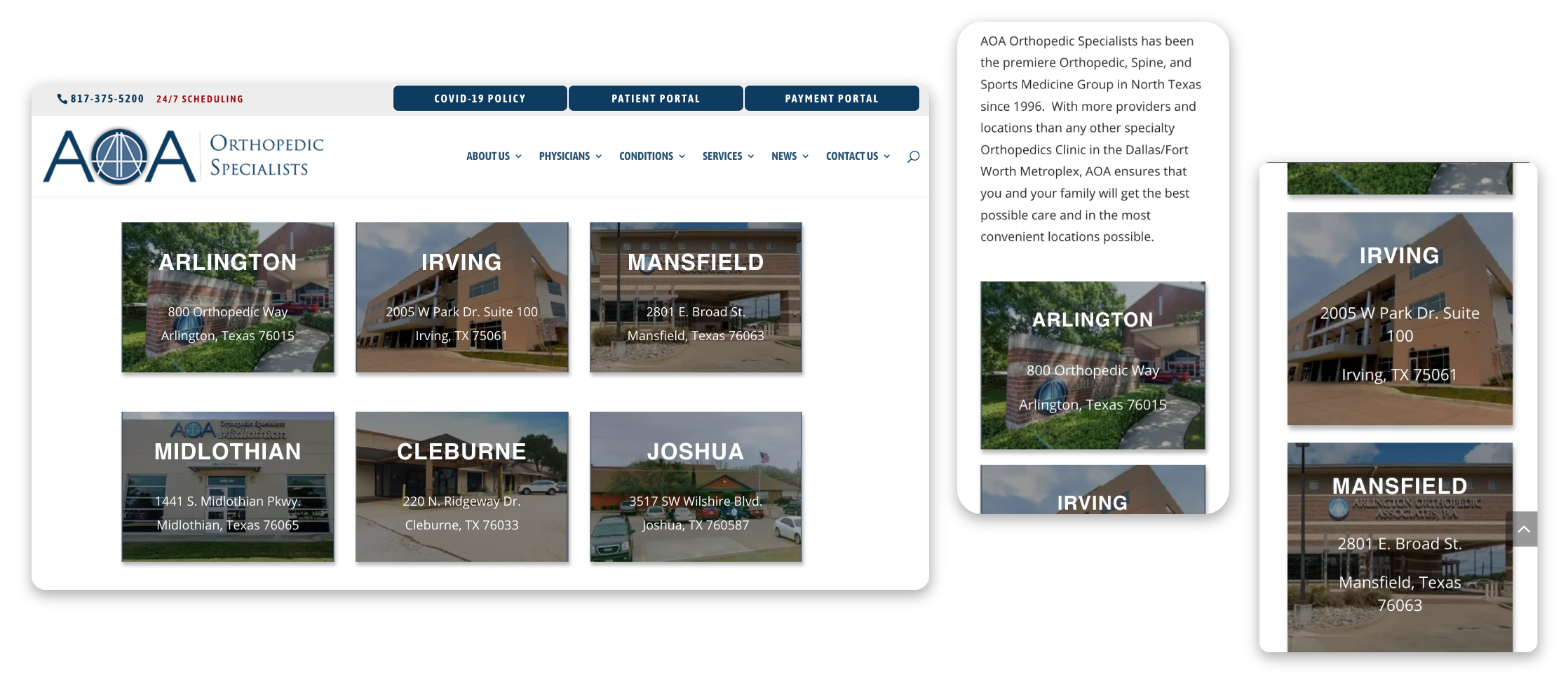

Analytics driven web development (HTML, CSS, PHP, Javascript, Google Tools)
Starting Point
Arlington Orthopedic Associates is a top surgical orthopedic firm in North Texas with 10 locations across the DFW metroplex and thousands of patients. When I began as their head web developer the website was roughly 300 pages full of good content, but lacking basic SEO inclusions and analytics tracking. From day 1 my critical push for the AOA organization was properly metricizing and optimizing site pages.
Implementing Tracking
The first thing we wanted to be able to track was our simplest conversion; calling for an appointment. This was the first Google Analytics “Goal” that we created and our first objective to optimize around. In order to properly utilize the existing site content, we needed to code and index the appropriate SEO tagging for every page. We didn’t create any new content during this initial phase; our strategy was to first fully index the existing site content in order to let Analytics reveal the “gaps” in the existing content strategy.
Conversion Goal Results
1st Cohort
After our first cohort of implementations we were finally able to see real data on the performance of our key goals and content. The results were telling; our focal conversion goal (call for an appointment) was performing well, but over 50% of users were churning out before completing the goal. Through further analysis (specifically with the Google Analytics “Behavior flow tool) we identified errant click-paths on the majority of user sessions that churned.
SEO Indexing Results
1st Cohort
The performance data of the pages with newly updated SEO indexing was revealing as well. From our research we found that AOA had built a strong organic presence and domain authority by creating unique content specific to their practice. The content produced over a span of more than 10 years had established a clear domain authority, however this domain authority was largely being underutilized. Google has a specific structure for website content that is optimal for search, adjusting for such allows your web pages to be highly visible for vastly more search queries.
Traffic Metric Results
1st Cohort
The most important metric when measuring web presence is the consistency of inbound organic traffic. In our initial measurements AOA was getting between 25-50 unique daily visitors. This was a bit underwhelming considering there are 10 locations and thousands of patients annually. Using keywords analysis and Google’s “Acquisition” tool we were able to identify some areas for major improvement.
Content Strategy
Based on the data we were able to create a new content strategy focused on the capitalizing on the “gap content” within AOA’s market. Building content around topics which are sparsely articulated by competitors creates a sizable advantage within local maxima. Creating this content leads to highly visible organic search traffic which then reinforces the domain authority of the AOA website as a whole. This organic increase in high level domain authority has a trickle down effect to each of the existing pages, giving each of them a subsequent boost in ranking against top competitors.
Long-term Strategy
With the over-saturation of paid advertising in limited real estate, the only way to effectively leverage your presence against incumbent competitors with deep pockets is to build reliable channels of organic traffic which consistently compound over time. There’s infinite ways to build this traffic but for a brand as established in their region as AOA, with 10 different offices and thousands of annual patients, the most effective strategy was to establish a consistent backlog of orthopedic content specific to their practice. This provided existing patient’s a reliable source for information while reinforcing brand trust. These improvements led to over a 100% YoY growth in AOA impressions and new users. AOA went from roughly 2.5million yearly impressions to pushing 6 million impressions in 2020.